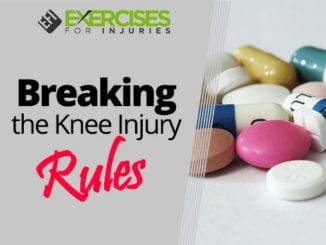
Since the leading preventable risk factor in extensive joint osteoarthritis is obesity, it makes sense for obese individuals to exercise. A standard recommendation for someone that is obese is to begin an exercise program. The type of exercise that is often recommended is a brisk walking program. This recommendation for brisk walking may make sense in helping to manage obesity. But it may increase the risk of injury, especially in the knee. The knee being the primary site for obesity-related osteoarthritis creates a tough dilemma.
CLICK HERE for the video on Obese Clients and Brisk Treadmill Walking
The Facts on Obese Clients Doing Brisk Walking
- Peak ground reaction forces (GRF) were 60% greater in the obese (BMI of 30 to 43) group than normal weighted individuals. This is how it broke down per walking speed:
o 1.0 to 1.75 m/s / 63%
o .75 m/s / 71%
o .5 m/s / 85% - GRF was significantly smaller for obese subjects versus normal-weighted subjects walking at 1.0 m/s
- Body mass was 48% greater in obese subjects versus normal-weight subjects, whereas the tibial articulation area was only 8% larger. As you can visualize, this is like having dined amount of surface if you are 100 lbs and a penny amount of surface area if you are 148 lbs. This would lead to obese individuals having greater mechanical loads across tibial articulating surfaces.
- Normal weight subjects preferred to walk at a speed of 1.4 m/s. But if obese subjects reduced their walking rate from 1.4 m/s to 1.0 m/s, the GRF decreased by 40%.
- During normal walking, the resultant GRF causes an external adduction moment at the knee which puts greater force on the medial aspect of the knee. An increase in external adduction correlates to osteoarthritis severity and progression.
- Obese adults walk with externally rotated leg or maybe valgus knee alignment, which acts to reduce external knee adduction.
- The preferred walking speed in normal-weighted adults is 1.4 m/s (3.1 mph), and in obese adults, 1.1 m/s (2.46 mph). With the slower walking speed, obese individuals have the same GRF as normal-weight individuals walking at a higher rate.
- Bonus Note – After 4 minutes of treadmill walking or a familiarization period. And the kinematics of walking on a treadmill is the same as ground walking.
The Take Home Message on Brisk Walking for the Obese
Brisk walking may not be the best weight loss solution for obese individuals. Having your obese clients walk at a slower speed which obese individuals often prefer, is the solution to decreasing stress on the knee joint. Other weight loss strategies will need to be explored to manage BMI to reduce the risk of osteoarthritis and osteoarthritis progress.
If you are a fitness professional and want more confidence in working with clients with osteoarthritis and a variety of knee rehabilitation exercises, I would suggest attending the Exercise Rehabilitation of the Knee Course.
Plus, I had done a past post on anterior knee pain and squatting that may interest you. CLICK HERE for the article.


